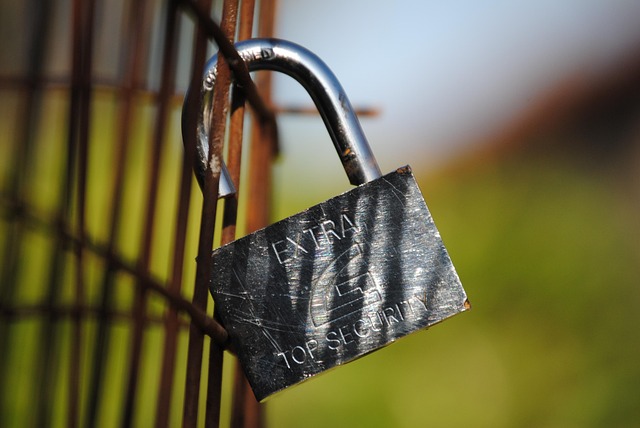Which Trading App Is Safe and Secure: A Complete Guide to Choosing the Right Platform
Author: Jameson Richman Expert
Published On: 2025-11-01
Prepared by Jameson Richman and our team of experts with over a decade of experience in cryptocurrency and digital asset analysis. Learn more about us.
Which trading app is safe and secure is one of the first questions any new investor or trader asks. This guide summarizes the security, regulatory, and usability factors you must evaluate before entrusting funds to any trading app. It covers the technical safeguards (encryption, two-factor authentication, cold storage), legal and regulatory checks, privacy and permission reviews, step-by-step setup tips, and a practical evaluation checklist you can use today. You’ll also find real-world examples of popular platforms, links to authoritative resources, and related reading on automated strategies and order management.

Why asking "which trading app is safe and secure" matters
Security in trading apps isn’t just about preventing theft—it's about protecting your identity, ensuring that orders execute correctly, and that the platform has the operational resilience to survive market stress. A single compromise can lead to financial loss, stolen credentials, privacy violations, or being unable to access your funds during market volatility. Consequently, understanding the combination of platform-level safeguards and personal security habits is essential.
Types of risk to consider
- Exchange hacks — breaches that allow attackers to steal funds from the platform’s hot wallets.
- Account takeover — phishing, credential stuffing, or SIM swaps that let attackers control your account.
- Smart contract risk — for decentralized apps (DApps) and non-custodial protocols, bugs in smart contracts can cause loss of funds.
- Operational outages — downtime during high volatility can prevent order execution and lead to losses.
- Regulatory intervention — frozen accounts or withdrawal limits when an exchange is sanctioned or loses its license.
- Insider risk — mismanagement, rogue employees, or poor governance within the company.
Key security features every safe trading app should have
When evaluating which trading app is safe and secure, look for the following baseline features:
- Two-factor authentication (2FA) — Prefer app-based 2FA (e.g., Google Authenticator, Authy) or hardware OTP devices over SMS 2FA.
- Cold storage and hot/cold segregation — A significant portion of user funds should be held in offline (cold) wallets.
- Proof-of-reserves and transparency — Public attestations or cryptographic proofs (e.g., Merkle-tree proofs) that demonstrate solvency.
- Insurance coverage — Exchange insurance for hacks or thefts reduces risk; verify scope and exclusions.
- Regulatory licensing and KYC — Licensed platforms are subject to audits and compliance requirements.
- Bug bounty programs and third-party audits — Independent security assessments and active bounty programs reduce software risk.
- Strong encryption and secure communications — TLS encryption, HSTS, and secure session management protect data in transit.
- Withdrawal whitelists and cold-wallet withdrawal approvals — Controls to restrict withdrawals to pre-approved addresses and multi-signature approvals for large transfers.
- Account activity and alerting — Real-time alerts for logins, withdrawals, and settings changes.

Technical signals of trustworthiness
Beyond marketing claims, inspect technical evidence:
- Does the platform publish security audits (smart contract or infrastructure)?
- Is the client open source or do independent researchers review it?
- Are there published incident reports and post-mortems when things went wrong?
- Does the app use hardware security modules (HSMs) for key management?
- Is session abuse prevented through device binding, IP monitoring, and multi-factor checks?
Regulation, legal protections, and jurisdiction
Legal jurisdiction matters. Different regulators provide different levels of consumer protection. When asking which trading app is safe and secure, consider:
- Where the company is incorporated and where its operating licenses are issued.
- Which local regulations apply to custodial assets and whether client funds are segregated from company assets.
- Whether the platform has been subject to regulatory fines or enforcement actions.
Authoritative resources include government and regulator portals such as the U.S. Securities and Exchange Commission (SEC) for investor alerts and guidance. See the SEC’s investor notices on crypto to understand regulatory risks: SEC investor resources.
Assessing reputation and transparency
Reputation is a powerful indicator but can be manipulated. Do due diligence using multiple sources:
- Check independent reviews (technology and finance news outlets) and look for long-term coverage rather than promotional articles.
- Search for public incident histories—how did the company respond to past problems? Were there transparent post-mortems?
- Look at developer activity (for DEXs and wallets) on GitHub to assess ongoing maintenance.
- Use community resources (Discord, Reddit) to see how responsive support is for real issues.

Privacy and app permissions
Mobile apps often request permissions that aren’t necessary for trading. When evaluating which trading app is safe and secure, check:
- Required permissions on iOS/Android — avoid apps that request access to contacts, SMS, or microphone without clear reasons.
- Data retention and sharing policies — does the platform sell user data or share it without anonymization?
- Authentication storage — are credentials cached insecurely on the device?
Personal security best practices (how to secure your account)
Even a secure platform can’t protect you from poor personal security. Use this step-by-step checklist to harden your accounts:
- Use a unique, strong password for each exchange and manage them with a reputable password manager (LastPass, Bitwarden, 1Password).
- Enable app-based 2FA using an authenticator app rather than SMS.
- Enable withdrawal whitelist if the platform supports it (restrict withdrawals to your hardware wallet or known addresses).
- Use hardware wallets or cold storage for long-term holdings; keep only trading capital on custodial platforms.
- Be cautious with API keys — restrict trading-only keys (no withdrawals), set IP whitelists, and rotate keys periodically.
- Verify URLs and use bookmarks to avoid phishing sites; enable browser privacy and anti-phishing extensions.
- Keep software updated — OS, antivirus, and the trading app itself to reduce vulnerability exposure.
- Educate yourself about social engineering and never share OTPs or sensitive screenshots with anyone.
Choosing between custodial and non-custodial apps
Which trading app is safe and secure often depends on whether the platform holds your private keys:
- Custodial exchanges (Binance, Bybit, Bitget, MEXC, etc.) hold user keys and offer convenience, liquidity, derivatives, and fiat on/off ramps. They are easier for active trading but require trust in the exchange’s security and governance.
- Non-custodial apps and DEXs give you control of private keys; security is your responsibility and relies on smart contract safety and wallet integrity.
For many users, a hybrid approach works best: keep trading capital on reputable custodial platforms for active trading while storing long-term holdings in a hardware wallet.

How to verify claims like "proof of reserves" and "insurance"
Exchanges may claim proof-of-reserves or insurance—verify the details:
- Proof-of-reserves — look for cryptographic proofs or independent attestations (Merklized balance proofs, third-party audits). Understand the scope: Does the proof cover all assets and liabilities, and how recent is it?
- Insurance — read the policy: who underwrites it, what events are covered (platform theft vs. user error), and coverage limits per user.
Practical checklist: How to evaluate an app right now
Use the following quick checklist whenever you evaluate a new trading app:
- Is the company registered and regulated in a reputable jurisdiction?
- Does the platform publish security audits and incident reports?
- Are hot/cold wallet policies and insurance stated publicly?
- Does the app support app-based 2FA and withdrawal whitelists?
- Are user reviews and independent articles generally positive, and are complaints handled transparently?
- Does the app request unnecessary permissions on mobile devices?
- Are developer and security teams visible and accessible (LinkedIn, public statements)?
- Is there a bug bounty program or independent penetration testing?
Examples of commonly used trading apps and a balanced view
No platform is risk-free. Below are widely known exchanges and considerations when you evaluate whether they meet your definition of "safe and secure."
Binance
Binance is one of the largest global exchanges by trading volume and offers deep liquidity and a broad product set. It has robust security features like SAFU (Secure Asset Fund for Users), which is an emergency insurance fund, and supports app-based 2FA. However, its regulatory status varies by jurisdiction, so confirm the regulated entity operating in your country before using it. If you want to try Binance, you can register here: Binance registration.
Bybit
Bybit is popular for derivatives trading and has features such as cold storage, multi-signature wallets, and 2FA. It has a strong liquidity profile for derivatives traders. For users interested in order management and spot trade operations, see this step-by-step guide on canceling spot trades on Bybit: how to cancel a spot trade on Bybit. You can also join Bybit via this referral: Bybit invite link.
Bitget
Bitget emphasizes derivatives and copy trading and runs bug bounties and third-party security assessments. Review their custody and insurance disclosures and use 2FA for account protection. Sign up here if you want to evaluate its platform: Bitget referral.
MEXC
MEXC is another exchange offering spot and derivatives markets with competitive token listings. Review their transparency and support responsiveness; consider using small amounts initially while you verify service quality. Registration link: MEXC registration.
Remember: listing these platforms does not mean they are risk-free. Use the checklist above and only keep what you need for active trading on custodial platforms. Move long-term holdings to cold storage.

Advanced security controls for active traders
Active traders and institutional users can implement higher assurance controls:
- Hardware security modules (HSMs) and multi-signature custody for corporate accounts.
- API key management with strict IP whitelisting, read-only keys for analytics, and limited-lifespan keys for automation.
- Dedicated accounts and sub-accounts per strategy to limit blast radius of a compromised key.
- Regular security drills and simulated incidents to test recovery procedures.
Automated trading, bots, and safety considerations
If you're using trading bots or strategy automation, security expands to the software you run and how it connects to the exchange. Use these guidelines:
- Use API keys with no withdrawal permission for your bots and enable IP whitelists.
- Run bots on secure environments (VPS with firewall rules, regular OS updates, and minimal exposed services).
- Prefer well-known bot frameworks with active communities and open-source code where possible; conduct a review before deployment.
- For a deeper dive into strategy bots and risk controls, see this guide on trading app strategy bots: Trading app strategy bots explained.
Signals, social trading, and the additional risk layer
Many traders use Telegram signals or social copy-trading features. These add the risk of following bad or manipulated signals. Use caution:
- Verify the track record with on-chain proof or transparent P&L sharing.
- Never provide private keys or OTPs to signal providers.
- Start with small allocations and paper trade or backtest signals.
- For guidance on using Telegram signals responsibly, review this comprehensive guide: Crypto trading signals on Telegram: an ultimate guide.

Phishing and scam prevention
Phishing remains one of the most common causes of account compromise. Protect yourself by:
- Bookmarking official sites and never clicking suspicious links in messages or emails.
- Verifying domain authenticity—look for typosquatting or homoglyph attacks.
- Checking email headers and SPF/DKIM/DMARC results for suspicious emails.
- Using a separate, secure email for financial accounts.
How to respond if you suspect a compromise
- Immediately change passwords and revoke API keys.
- Disable withdrawals if the platform provides a temporary freeze or withdrawal lock.
- Contact the exchange’s support and provide requested details securely; use official support channels published on the site.
- Report phishing/suspicious sites to the platform and, if in the US, to the FBI’s Internet Crime Complaint Center (IC3) or your local cybercrime unit.
Measuring trust: a scoring approach you can use
Create a simple scoring model to compare apps:
- Security features (0–30 points): 2FA, cold storage, HSM, withdrawal whitelist, etc.
- Transparency (0–20 points): audits, proof-of-reserves, incident reports.
- Regulatory standing (0–20 points): licenses, registrations, regulatory history.
- Operational resilience (0–15 points): downtime history, liquidity, support responsiveness.
- Community trust (0–15 points): developer activity, independent reviews, social proof.
Use this quantitative approach to compare options fairly and make a documented decision rather than relying on gut instinct.

Checklist for onboarding to a new trading app
Before funding a new account, do the following:
- Verify the app’s official domain and mobile store listing; install only official apps from iOS App Store / Google Play.
- Set a unique password and enable app-based 2FA immediately.
- Complete KYC so you’re not limited during withdrawals during a crisis.
- Set a withdrawal whitelist and test with a small withdrawal first.
- Fund only a small amount initially and attempt a full withdrawal test to the final destination (e.g., hardware wallet).
- Keep records (screenshots of deposits, withdrawals, transaction IDs) for dispute resolution.
Useful authoritative resources
- Cryptocurrency exchange (Wikipedia) — general background on exchanges and risks.
- NIST SP 800-63 Digital Identity Guidelines — best practices for authentication and identity assurance.
- SEC investor resources — official guidance and investor alerts for U.S. investors.
Final recommendations — practical answers to "which trading app is safe and secure"
There is no single universal answer to which trading app is safe and secure. Safety is relative and depends on:
- Your jurisdiction and the applicable regulatory protections.
- Your personal operational security practices.
- The platform’s transparency, technical safeguards, and incident response history.
That said, a practical rule of thumb:
- For active trading and leverage products: use well-known centralized exchanges with demonstrable security practices, robust liquidity, and transparent policies (for example, platforms such as Binance, Bybit, Bitget, and MEXC are commonly used — evaluate each against the checklist above and register through their official links if you decide to try them).
- For long-term holdings: prefer cold storage with a reputable hardware wallet and transfer only what you need to exchanges for trading.
Here are the registration links for commonly used exchanges if you want to evaluate them directly:
- Binance: Create Binance account
- MEXC: Create MEXC account
- Bitget: Create Bitget account
- Bybit: Create Bybit account

Further reading and tools
If you want to expand beyond platform selection into operational trading best practices, automated strategies, or signal verification, these guides are helpful:
- Trading app strategy bots explained — an in-depth guide to bots and automation.
- Crypto trading signals on Telegram — how to vet and use signals responsibly.
- How to cancel a spot trade on Bybit — practical order management guidance.
Conclusion
Asking "which trading app is safe and secure" is the right first step. Evaluate platforms using a combination of technical signals, regulatory standing, transparency, and community trust. Pair platform-level security with strict personal security practices—unique passwords, app-based 2FA, withdrawal whitelists, and hardware wallets. Use the scoring model and checklist provided here to make a repeatable, evidence-based decision rather than relying on advertising or hype.
Security is an ongoing process. Reassess your platforms and habits regularly, stay informed about industry incidents, and never risk more than you can afford to lose.